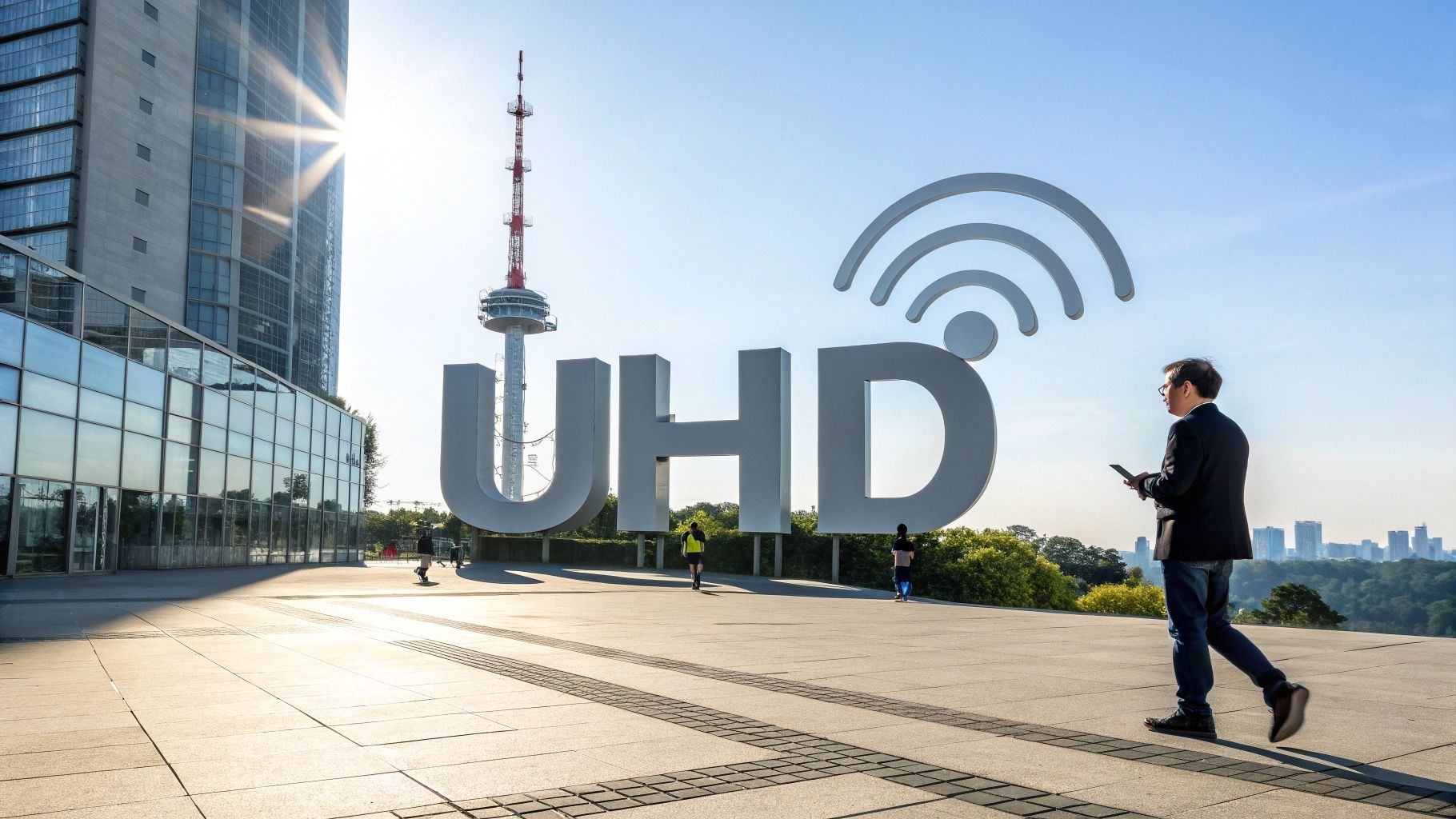UHD SPAIN WELCOMES THE APPROVAL OF THE NEW NATIONAL TECHNICAL PLAN FOR DIGITAL TERRESTRIAL TELEVISION

- A renewed legal and technical framework is established for the introduction of DVB-T2 transmission technology, which will enable widespread UHD quality broadcasts.
- Spain became the world leader in broadcasting in this technology in 2024 and now the leadership of our country is strengthened, facilitating the start of UHD broadcasts to private broadcasters.
Spain, as a pioneer in the implementation and broadcasting of Ultra High Definition (UHD) content within the European Union, continues to move towards a more advanced Digital Terrestrial Television. The aim is for it to be open, accessible and of the highest possible quality. With the entry into force of the new National Technical Plan for Digital Terrestrial Television (DTT) in March 2025, a renewed legal and technical framework has been established. This will allow the introduction of DVB-T2 transmission technology in DTT services in any territorial area (national, regional and local), thus generalising UHD quality broadcasts.
In February 2024, the cessation of standard definition (SD) DTT broadcasts was completed, and all broadcasts were switched to High Definition (HD). Since then, Spain has continued to make progress in incorporating new standards of technological innovation in free-to-air television.
Spain, a pioneer in UHD technology
With the start of regular UHD broadcasts by public television in February 2024, Spain became the world leader in UHD broadcasting. One year later, the publication of this royal decree of 2025 consolidates Spain’s leadership, facilitating the start of UHD broadcasts by private broadcasters.
The new regulation establishes obligations that will facilitate the growth of the UHD and DVB-T2 ready receiver base, which has increased significantly in recent years. Currently, 67.8% of the receiver fleet is ready for DVB-T2 broadcasts and 36.6% is ready for UHD broadcasts.
Closer to global DTT in UHD
This is a royal decree that defines a migration plan so that one day all content will be UHD. This new National Technical Plan will make it possible to extend and generalise the digital terrestrial television service with UHD technology. This will bring clear advantages for citizens in their access to this type of audiovisual communication service.
In order to advance in this objective, it will be necessary to initially have a digital multiplex that evolves to DVB-T2 transmission technology, in which TV channels with UHD resolution will be broadcast in simultaneous broadcasts. This process will be carried out in two phases, prioritising in the first stage the implementation of the technology so that citizens begin to regularly receive statewide DTT channels in UHD quality.
These UHD channels will broadcast simultaneous content that is already offered on other channels, so that citizens will not miss out on any channel or content. Likewise, in this initial phase, the adaptation of the television receiver fleet to receive DVB-T2 transmission technology and UHD quality broadcasts will be carried out.
When the digital terrestrial television receiver fleet is sufficiently adapted – at least 95% of television sets and receivers must be compatible with DVB-T2 technology and at least 90% must receive UHD – the second phase will begin, which will involve the global implementation of DVB-T2 technology and UHD quality in all DTT services, at national, regional and local level.
About UHD Spain
UHD Spain is a non-profit association created on 26 January 2021 to promote Ultra High Definition (UHD) in Spain. There are currently 34 associate members: Ametic, Ateme, Atresmedia, Axion, Canal Sur, Canon, CCMA, Cellnex, Cires21, COITT, Dolby, Fenitel, Forta, Fraunhofer, Grup Mediapro, Gsertel, Henneo, Hispasat, Hurí, Lavinia, Medina Media, Rohde & Schwarz, RTVE, Sapec, Synamedia, Tedial, Telecom CLM, Televés, TRedess, TVU Networks, UPM, Uteca, Vestel and Video-MOS.